What Styles of Pizza There Are
Pizza is one of the most famous Italian dishes. It appeared in its modern form in the 18th or early 19th century in Naples. Pizza was soon brought to the United States by Italian immigrants, where the dish quickly became popular and spread throughout the world. Over time, numerous types and styles of pizza have emerged. The types of pizza are different in toppings, and the styles of pizza are different in the way they are made.
5-Minute Crafts would like to tell you about the 8 main styles of pizza, and how they’re different from each other.
1. Neapolitan pizza

Neapolitan pizza is the only pizza whose art of making it is included on UNESCO’s list of intangible cultural heritage.
Its dough is kneaded by hand or with a slow-speed mixer. Type 0 or 00 flour, yeast, salt, and water are used for cooking. The base is formed by hand and should be no more than 0.12 inches thick. The pizza is then baked for only 60–90 seconds in a 905°F wood-fired oven.
Typically Naples-style pizzas are pizza Margherita (with tomatoes, mozzarella cheese, basil, and extra virgin olive oil) and pizza marinara (with tomatoes, garlic, extra virgin olive oil, and oregano).
2. Roman pizza
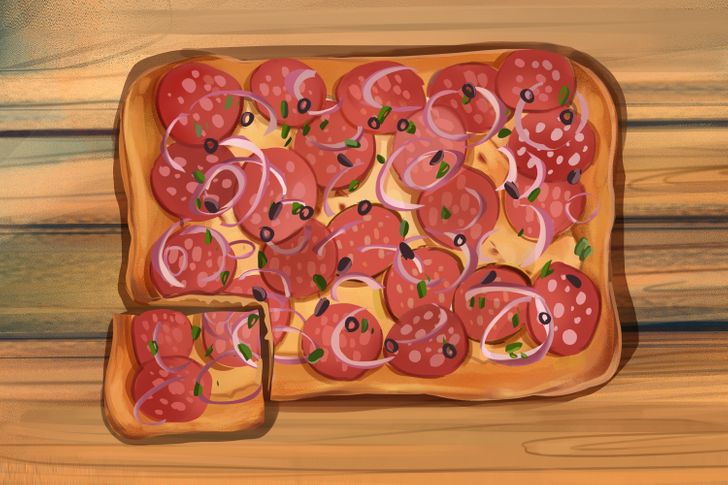
Roman pizza (Pizza Romana in Italian) is a style that originated in Rome and is now popular throughout Central Italy. It can be made in 2 versions:
- The whole round pizza with a thin base, which is often served in restaurants. The dough is made in the same way as for the Neapolitan pizza, but with the addition of olive oil. This makes the base crispier and more flavorful.
- The rectangular pizza, which is convenient to cut into pieces and take away. The base is usually thicker than that of the round pizza and similar to focaccia.
The topping for Roman pizza can be really diverse: from classic tomatoes and mozzarella cheese to a variety of meats.
3. Sicilian pizza
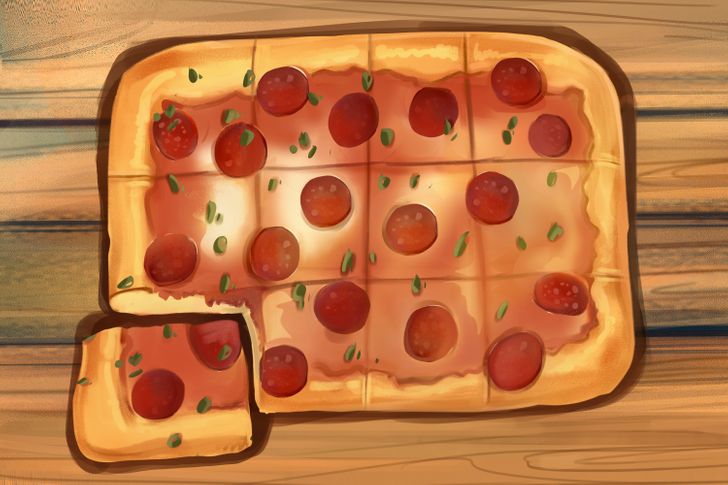
Sicilian pizza comes from Palermo, the capital of Sicily. It is called sfincione in mainland Italy, and sfinciuni in Sicily itself.
The way the Sicilian pizza is made varies from one province of the island to another, but usually the base is a thick crust of a rectangular shape. It’s often topped with herbs, onions, anchovies, tomatoes, hard cheese, and tomato sauce. The latter is sometimes placed on top of the toppings to prevent it from soaking into the thick dough.
In the Italian province of Siracusa, Sicilian pizza is slightly different from the classic one: it’s usually round in shape and resembles the Neapolitan pizza. In the province of Catania, potatoes, sausage, and broccoli can be added to the topping.
4. Calzone
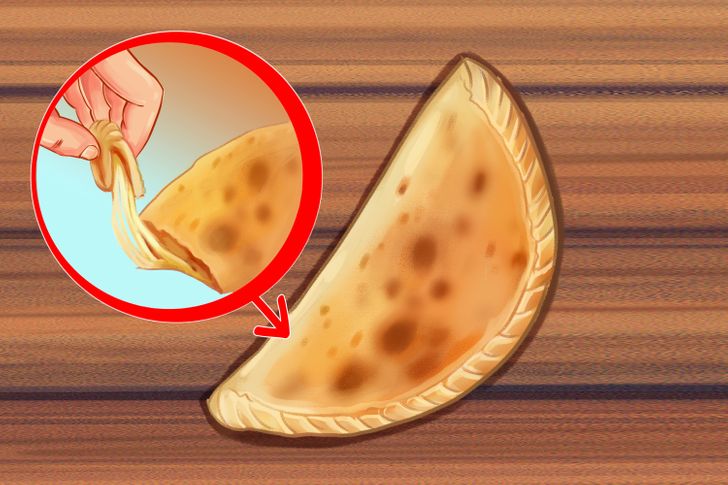
The calzone is a folded pizza that appeared in Naples in the 18th century. During cooking, salted yeast dough is stuffed with a filling made from a variety of ingredients. It can be filled with tomatoes, ham, salami, anchovies, eggs, olives, onions, fish, cabbage, minced meat, as well as parmesan, pecorino, ricotta, and mozzarella cheeses.
Usually, the calzone base is rolled out, filled with toppings, folded in half, and baked in the oven. Unlike other styles of pizza, the calzone doesn’t contain tomato sauce on the inside.
5. New York-style pizza
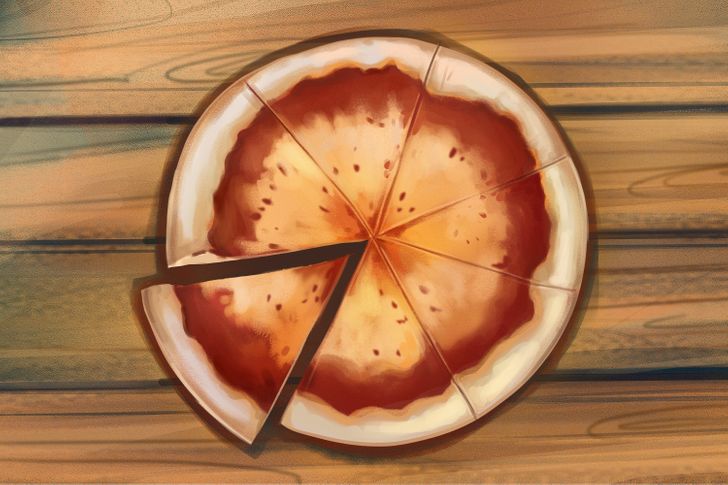
The New York-style pizza is derived from the Neapolitan pizza. It is characterized by a base of the thinnest dough, and the traditional topping is tomato sauce and mozzarella cheese. However, compared to the Neapolitan pizza, the New York-style pizza is large in size: from 18 to 24 inches in diameter. It’s usually cut into 8 slices.
The crust of the New York-style pizza is thick and crunchy around the edges for a more comfortable grip, but still soft and pliable enough to be folded in half and eaten. The original dough of the New York-style pizza is believed to acquire its distinguishing crunchiness due to the flour that is high in gluten and minerals found in the city’s tap water.
Like other pizzas, New York-style pizza has its varieties. In addition to the traditional toppings, parmesan cheese and pepperoni can be used, as well as oregano, basil, and chili peppers. It’s worth mentioning the variety called a jumbo slice. This is a giant New York-style pizza with a diameter of 36 inches, each slice of which can be up to 1 foot long.
6. Chicago-style pizza
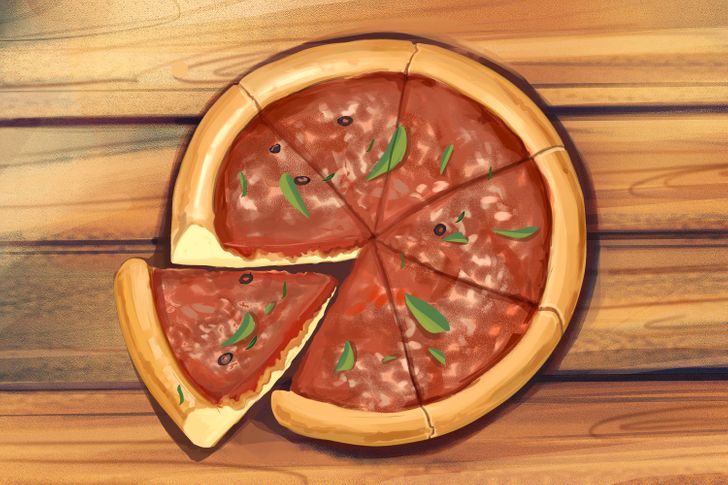
The Chicago-style pizza is cooked in a deep baking pan. This gives it its characteristic high edge, which provides plenty of space inside for a hearty topping. Because of this, the dish looks more like a pie than a pizza.
The Chicago-style pizza is prepared as follows: first, they put a thick layer of dough into the mold, then a layer of cheese, a layer of topping, and then they add tomato sauce on top. The topping can be meat, sausage, pepperoni, onions, mushrooms, or bell peppers.
Bake a Chicago-style pizza in a round, steel pan or an iron skillet that has been oiled. The skillet makes it easier to take out the ready-made pizza and helps to lightly brown the outside of the dough.
7. Detroit-style pizza
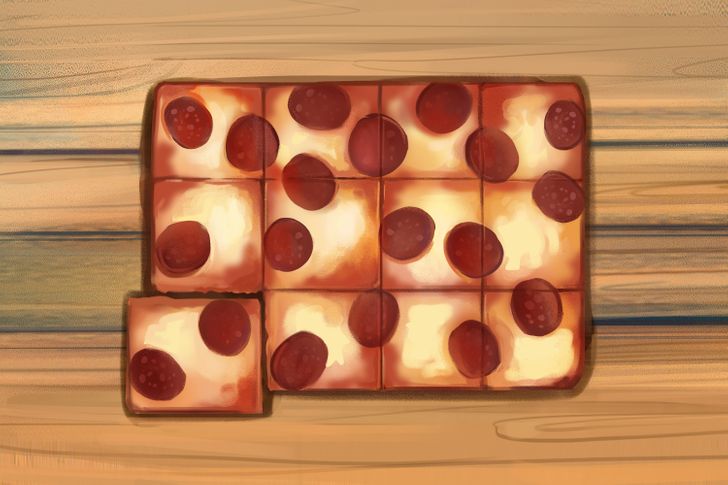
The Detroit-style pizza is usually rectangular in shape with a crunchy dough that is 1.5 inches thick. It is often baked in a rectangular steel baking tray designed for use as an automotive drip pan or to hold small industrial parts in factories. This style emerged in the mid-20th century in Detroit, and became popular in other regions of the United States in the 2010s.
The traditional topping is tomato sauce and Wisconsin brick cheese. It is a semi-hard, pale yellow cheese, the shape of which resembles a brick, hence the name. This pizza usually has no rim, so the cheese goes all the way to the edges.
The Detroit-style pizza has several varieties. One has the salami called pepperoni as a topping. The other is called “red top” and has an extra layer of tomato sauce on top of the cheese. The third variety is called “frico” and has another layer of cheese around the edges of the pizza, which caramelizes and gives the crust a lacy, crispy edge.
8. Argentine pizza
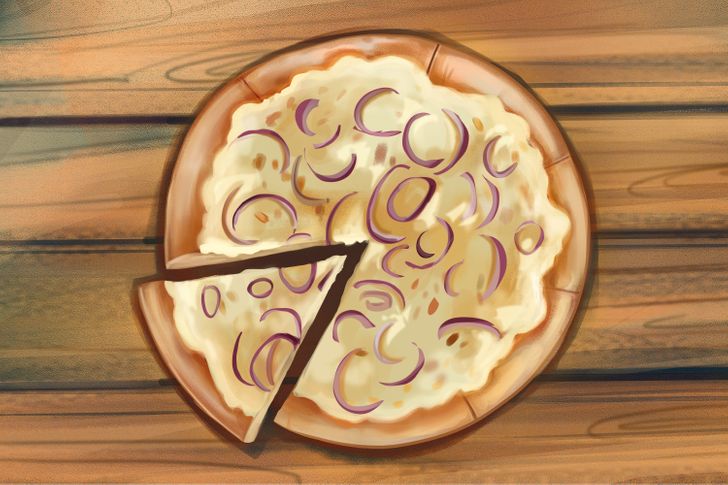
At the end of the 19th century, Argentina experienced a massive Italian immigration. Soon, the natives of Naples and Genoa opened the first pizzerias in the country. In one such venue called Banchero’s Pizza in La Boca, Buenos Aires, Fugazza was invented.
The Fugazza means focaccia in the Genovese dialect. This pizza has a thick dough base (at least 1 inch thick), topped with mozzarella cheese, different types of onions (red, green, and sweet), oregano, parmesan, and sometimes olives. The Fugazza dough usually has a spongy consistency and much more water and leavening than the Neapolitan pizza.
What other pizza styles do you know of?